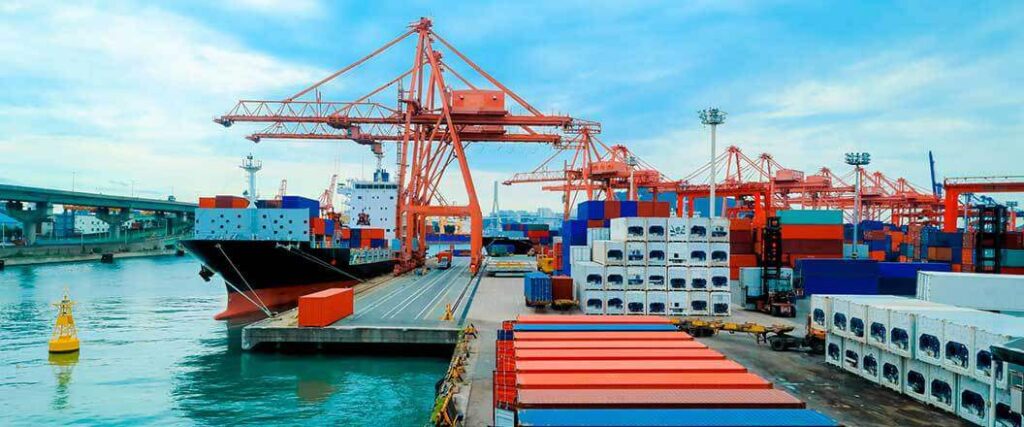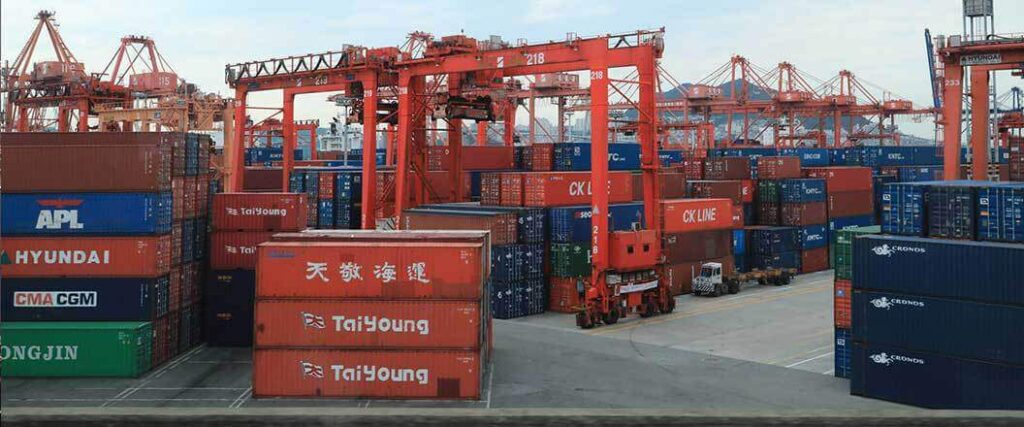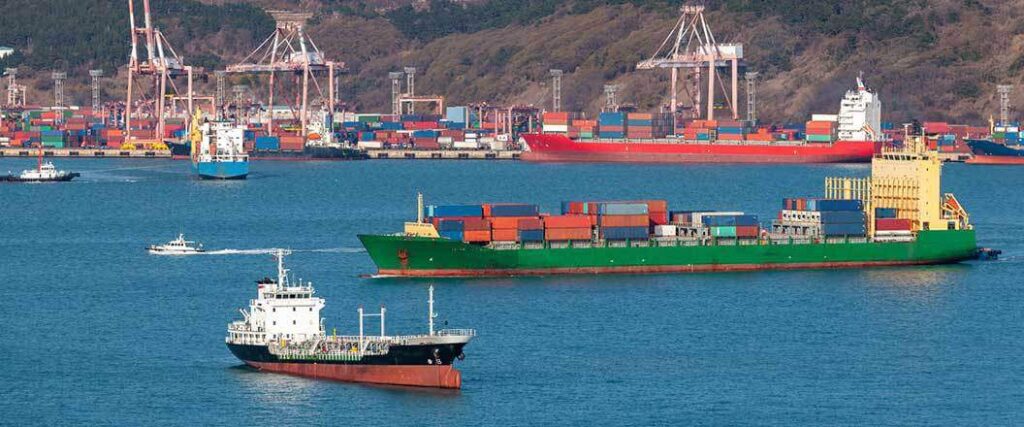Exporting to South Korea is a complex task for even the most experienced exporters. Although South Korea and the U.S. have a positive trade relationship, there are many regulations that you’ll need to follow to get your goods across the sea and into the nation. Rules can vary by product, but we’ve laid out the general requirements to export goods to this valuable U.S. trading partner.
According to the U.S. International Trade Administration, the general regulations for exporting to South Korea will require you to:
Exporting to South Korea will be simple, as long as you follow these regulations explicitly.

As we’ve already noted, the U.S. and South Korea already have a good trading relationship. Back in 2012, the U.S.-Korea Free Trade Agreement (KORUS FTA) was put into effect. Since the implementation of this agreement, around 98.8 percent of U.S. exports sent to South Korea are not subject to tariffs.
Some U.S. exports that aren’t subject to tariffs include the following:
In 2020 alone, the 7th largest export market for the U.S. was South Korea. Thanks to the excellent trading relationship due in part to the KORUS FTA, U.S. exporters have a great amount of market access to South Korea.
While the U.S. exports a variety of different goods to South Korea, there are a few specific ones that consumers in the country import the most. Table below shows the most popularly exported U.S. products to South Korea.
| Exports | Value of Exports |
| Mineral Fuels | $8.6 Billion |
| Machinery | $7.8 Billion |
| Electrical Machinery | $5.7 Billion |
| Optical and Medical Instruments | $3.3 Billion |
| Vehicles | $2.8 Billion |
When it comes to agricultural products, South Korea imports a large quantity of U.S. grown products as well. South Korea makes up the U.S.’s fifth largest agricultural market. We've listed some of the most popular U.S. agricultural products that South Korea imports.
| Agricultural Exports | Value of Exports |
| Beef & Beef Products | $1.7 Billion |
| Corn | $548 Million |
| Fresh Fruit | $459 Million |
| Pork & Pork Products | $453 Million |
| Food Preparations | $419 Million |
On top of these popular exports, numerous sectors in South Korea need U.S. exports of goods and services. Some of these sectors include:
All of these sectors offer great opportunities for investment in Korea. Exporting to Japan is another viable option exporters can take advantage of.

The regulations you have to follow when exporting to South Korea can vary based on the goods you’re sending there. That said, some basic regulations apply to all forms of freight that you export.
Meeting the correct document requirements is essential to export goods to the Republic Of Korea. The purpose of having paperwork accompany your exported shipment is to communicate details about the freight to the importer of your goods in South Korea.
Paperwork accompanying your shipment is also analyzed by U.S. and South Korean customs officials to determine if you’re in line with all applicable regulations associated with your goods. The documents you will need to send with your shipment include the following
Most of the documents that we’ve listed are commonly used for shipments to other countries as well. However, one type of document that stands out the most is the certificate of origin (CO).
Filling out the CO is a fairly unique process for every country you export to. This is because the COs have to be filled out according to the FTA they’re applying for. In this case, you’ll have to fill your CO in accordance to the KORUS FTA.
Your importer in Korea is likely to let you know that they want to apply for preferential tariff treatment at the beginning of the import/export process. If your buyer in Korea doesn’t let you know right away, be sure to ask them if they wish to apply for preferential tariff treatment.
Once the importer verifies they want to apply for preferential treatment, you must first determine if your goods qualify for preferential treatment under KORUS FTA. There are multiple ways your goods can qualify for the KORUS FTA which are:
The two most common ways that your goods can qualify for the FTA are by showing they’re wholly obtained or by following the FTA-specific ROO. Wholly obtained goods are products that were made entirely within one member nation of an FTA. If you can show that your goods were wholly obtained, you will need to follow the ROO which is unique to the KORUS FTA.
Once you’ve figured out your goods qualify for the KORUS FTA, you can start providing the essential information that needs to be included on your CO. While other FTAs require exporters to use COs in a specific format, the KORUS FTA doesn’t have this requirement. Therefore, you only have to worry about including the correct information for your shipment. That information is:
Special documentation for food and agricultural exports to South Korea will require you to follow regulations dictated by the Animal Plant Health Inspection Service (APHIS), which is a component of the U.S. Department of Agriculture (USDA). Additionally, South Korea has regulations that an exporter needs to follow when they send shipments of agricultural products.
Fortunately, you won’t need to follow these regulations if you’re exporting non-food-related products.
Our article on documents required for export will give you more information on the basic paperwork you'll need to send goods to another country.
Interested in exporting from other Asian countries? Check out our article on exporting from India.
South Korean label and marking requirements for exported goods aren’t too complex to follow. That said, there are still labeling requirements that you’ll need for your exported shipment to arrive in the Republic Of Korea successfully. For all commercial exports to Korea, you’ll need to include a country of origin label on your shipment.
This label will be required even if the importer of your goods has not claimed preferential tariff treatment. The label itself will also vary based on the HTS number that corresponds with the goods you’re exporting. You’ll also need to follow labeling requirements for the following:
Labeling requirements for exports like these are regulated by the Foreign and Agricultural Import Regulations and Standards (FAIRS). The FAS lists these requirements for exported goods to South Korea, as well as other countries. Lastly, goods that are regulated under the Korean Ministry of Trade, Industry and Energy (MOTIE) will need to have the appropriate labels when exported to Korea.
One important part of exporting and submitting an export notice. The export notice simply states that goods are being shipped out of the country and they provide some basic information about the freight leaving. The declarations are also reviewed by the customs officials in the other country.
Sending an export declaration to South Korea is easy since you will be able to submit one virtually. This can be done on the South Korean Customs website.
One popularly imported product by many countries if beef. Check out our article on how to export beef to learn how you can send this valuable product to another country.

Any country that is importing goods from another wants to make sure that the goods they’re receiving are safe for the citizens that will come into contact with them. That’s why certain goods you send to the Republic of Korea will need to be in line with the standards for trade.
Two Korean agencies uphold the standards for trade for specific types of goods. These agencies are:
If you want to export industrial goods that are regulated by the KATS, you will need to determine if they need the following three items:
To ensure that goods regulated by the MFDS abide by their standards, simply consult the Korea FAIRS report that you would use to meet South Korea's labeling requirements for agricultural goods.
Understanding export controls is important for every exporter to understand. Our article on export control basics will be able to help you follow these important guidelines.

As all countries do, the Republic of Korea has a list of certain items that it doesn’t want to be imported by its citizens. The list is small and includes the following items:
Fortunately, it’s easy to avoid exporting these types of materials to the Republic Of Korea. If you do think any of the goods you’re exporting fit into the categories listed, reach out to South Korean Customs for verification. That said, if you do export any of the products listed above, they will be denied entry by South Korea Customs and you will face fines for doing so.
Prescription goods are a valuable commodity for just about every country. In our article on exporting prescription drugs from the U.S., you’ll learn everything you need to ship these goods off successfully.

Schedule B Numbers and HS codes are similar to one another. Each of them is used to classify goods that are both imports and exports and used to determine the duties and costs required when importing to South Korea. The difference between them is that Schedule B Numbers are used for classifying exports, while HS codes are used for imports.
According to the U.S. Census Bureau, you’ll need to include a Schedule B Number when exporting goods over $2,500 in value or if you’re exporting goods that need to be accompanied by an export license. You will also need to use the HS code of the importing country that corresponds with your exported shipment.
In this case, you will need to access South Korea’s HS codes to classify your product. This information is used by both U.S. and Korean Customs authorities. Providing the HS code(s) for the goods you’re exporting will also be needed if the importer from Korea wants to apply for preferential treatment.
At Cargo Export USA, we have the tools to help you get your freight to buyers in other countries. Our team of seasoned and certified export consultants can assist you in fulfilling the customs regulations of the U.S. and the Republic of Korea.
Our consultants have the important task of staying up to date with current exporting regulations. You can gain access to this information by scheduling a consulting session with one of our brokers. If it’s a certificate of origin you need, our team can help you obtain this document.
Lastly, we offer screening services which will help us determine if your goods will make it past customs or not. Call our services at 866-301-0635 or get started today.